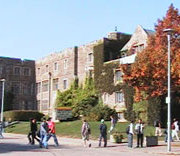| |
Thursday, May 11, 2006
Professor Nancy Reid, Department of Statistics, University of Toronto, will speak on “Getting started in research: some personal views”.
Professor Jerry Lawless, Department of Statistics and Actuarial Science, University of Waterloo, will speak on “Success at statistical research: some things you should know ”.
Abstract: I will attempt to identify and discuss some of the aspects
of doing research in statistics, and consider background that should prove helpful. Rather than formulate a structural process for research, as often found in "research methods" courses in specific scientific areas, I will present some broad guidelines and suggestions. The emphasis will be on asking interesting questions and on the identification of topics for research. After some general discussion I will illustrate various points through some research topics that I have addressed during my career.
Friday, May 12, 2006
Prof. Judy-Anne Chapman, Department of Community Health and Epidemiology, Queen's University, will speak on “Accreditation of Professional Statisticians by the Statistical Society of Canada for a designation of P.Stat. or A.Stat.”. Judy-Anne is the Chair of SSC Initial Accreditation Committee.
Prof. Abdel El-Shaarawi, National Water Research Institute, Burlington and McMaster University, will speak on “Environmental control and statistics ”.
Abstract: Protecting the health of the environment and humans are the major reasons for setting control limits on the inputs from point and non-point sources of pollution. There are chemical, biological and physical pollutants such as PCBs, pathogenic organisms, and radioactive substances. The limits are selected to meet maximum risk levels which are scientifically supported and politically acceptable. Three sequential steps are usually used to develop the limits: hazards identification, risk assessment and risk management. Statistical science plays a central role in each step but above all in linking and integrating them in a coherent structure. I will illustrate this role by discussing two examples: the setting of microbiological limits for recreational water and the development of limits to protect the aquatic environment from paper mills effluents in Ontario . The concern of the first example is the protection of human health while the second has the broader objective of protecting ecosystem health.
|

